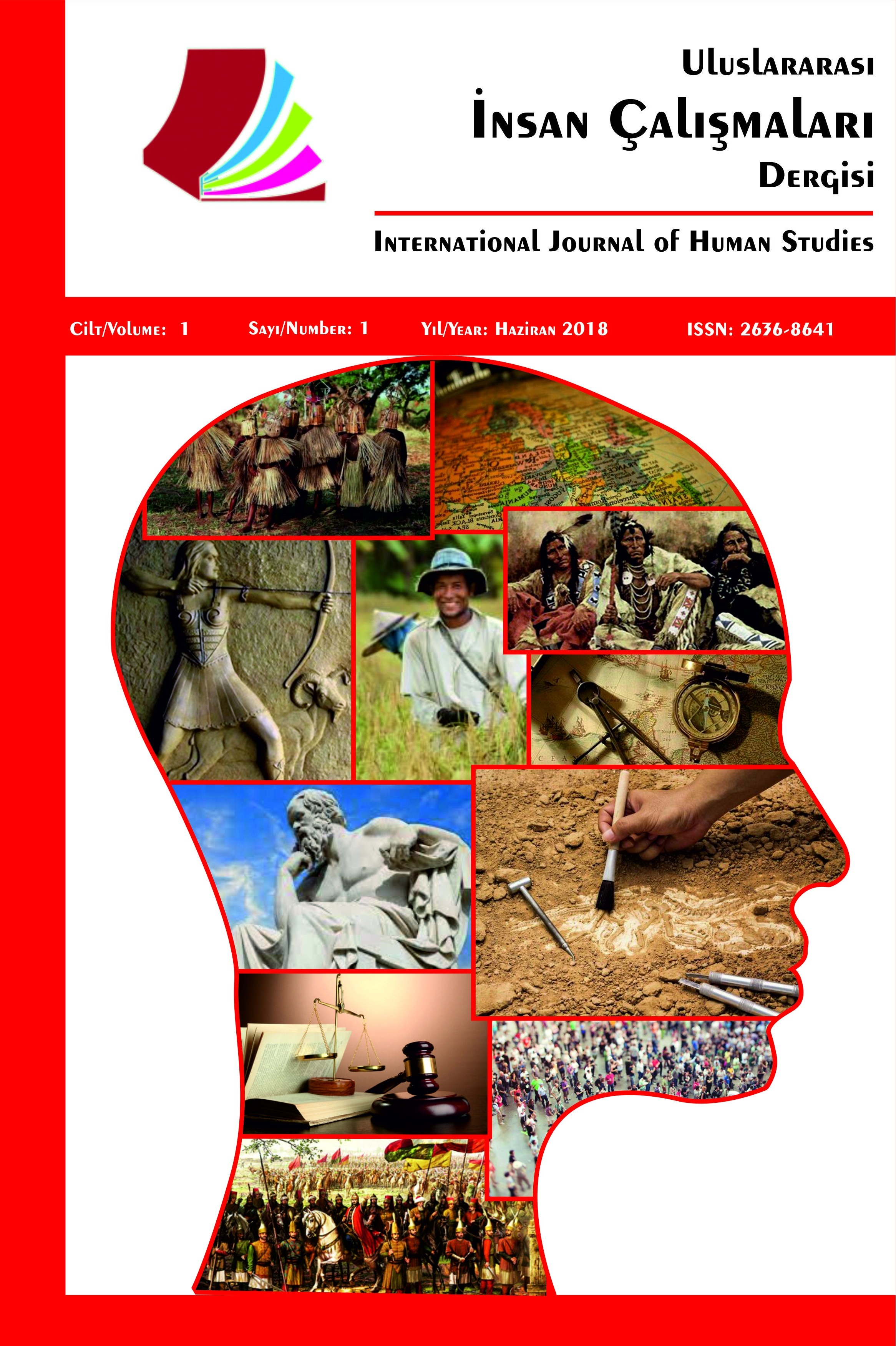“Shakespear’den Daha İyi?”: G. B. Shaw’un Postmodernizmi ve Shakespeare
G. B. Shaw farklı eserlerinde kendisini Shakespeare ile bağdaştırmasına rağmen, Shaw’un oyun yazarına dair düşüncesini anlamaktaki güçlük Shakespeare’in trajedi ve komedilerini olumsuz eleştirisinden kaynaklanmaktadır. Shaw’un düz yazı eserleri incelendiğinde, onun ya Shakespeare’i övdüğü ya da onu küçük düşürdüğü gözlemlenebilir. Ancak, Shaw’un oyunlarında bizim için önemli olan, Shakespeare’i eleştirme dürtüsünün Shaw’u farklı sebeplerle kanonik oyun yazarının eserlerini değiştirmeye itmiş olmasıdır. Yirminci yüzyılın başından kariyerinin sonuna kadar Shaw, hem Shakespeare’in oyunlarını yeniden yazmaktadır hem de Shakespeare’i karakterlerinden biri olarak sunmaktadır. Bu eserlerde Shaw, Shakespeare ve onun eserlerini postmodernist edebi özellikleri kullanarak başka bir yere taşımaktadır; öyle ki, Shakespeare Shaw’u postmodernizme iten güç olur. Bu çalışma, Shaw’un Caesar and Cleopatra (1898), The Dark Lady of the Sonnets (1910), “Macbeth Skit” (1916), Cymbeline Refinished (1937) ve Shakes versus Shav (1949) adlı seçilmiş eserlerinde Shakespeare’in postmodern eylem gücünü incelemektedir.
Anahtar Kelimeler:
George Bernard Shaw, Caesar and Cleopatra, The Dark Lady of the Sonnets, “Macbeth Skit, ” Cymbeline Refinished, Shakes versus Shav, Shakespeare, Postmodernizm
“Better than Shakespear?”: G. B. Shaw’s Postmodernism and Shakespeare
Although G. B. Shaw tends to associate himself with Shakespeare in his different works, much of the difficulty in understanding Shaw’s conception of the playwright stems from his adverse criticism of Shakespeare’s tragedies and comedies. When Shaw’s prose works are examined, it can be observed that he either praises Shakespeare or defames him. However, what matters to us in Shaw’s plays is that the impetus to criticise Shakespeare leads Shaw to revise the canonical playwright’s works for different reasons. From the beginning of the twentieth century to the end of his career, Shaw both rewrites Shakespeare’s plays and presents Shakespeare as one of his characters. In these works, Shaw relocates Shakespeare and his plays by making use of postmodernist literary characteristics in a way that Shakespeare becomes an impetus of postmodernism for Shaw. This paper explores Shakespeare’s postmodern agency in Shaw’s selected plays, namely Caesar and Cleopatra (1898), The Dark Lady of the Sonnets (1910), “Macbeth Skit” (1916), Cymbeline Refinished (1937) and Shakes versus Shav (1949).
Keywords:
George Bernard Shaw, Caesar and Cleopatra, The Dark Lady of the Sonnets, “Macbeth Skit, ” Cymbeline Refinished, Shakes versus Shav, Shakespeare, Postmodernism,
___
- “Bricolage.” (2001). In C. Baldick (Ed.), Oxford Concise Dictionary of Literary Terms. Oxford: Oxford University Press.
- Hutcheon, L. (1988). A Poetics of Postmodernism: History, Theory, Fiction. New York: Routledge.
- Hutcheon, L. (2006). A Theory of Adaptation. New York: Routledge.
- Lüdeke, H. (1955). Some Remarks on Shaw’s History Plays. English Studies 36 (1), pp. 1-6.
- Mason, F. (2007). Historical Dictionary of Postmodernist Literature and Theater. Plymouth: The Scarecrow Press.
- Papreck, A. (2005). ‘Shakes vs. Shav’: George Bernard Shaw’s Misreading of Shakespeare’s Historical Heroes. Diss. School of Saint Louis University in Partial, 2005. ProQuest. Retrieved from: https://www.proquest.com/pqdtglobal/docview/305440712/E795FC12BCBC46B5PQ/1?accountid=16595
- Peters, S. (1987). Shaw’s Double Dethroned: The Dark Lady of the Sonnets, Cymbeline Refinished, and Shakes Versus Shav. Shaw 7, pp. 301-316.
- Pierce, R. B. (2011). Bernard Shaw as Shakespeare Critic. Shaw: The Annual of Bernard Shaw Studies 31 (1), pp. 118-132.
- Reynolds, J. (1999). Pygmalion’s Wordplay: The Postmodern Shaw. Gainesville: University Press of Florida.
- Roy, N. Y. (1976). George Bernard Shaw’s Historical Plays. Delhi: Macmillan Company of India.
- Sanders, J. (2006). Adaptation and Appropriation. New York: Routledge.
- Schmidt, K. (2005). The Theater of Transformation Postmodernism in American Drama. Amsterdam: Rodopi.
- Shakespeare, W. (1990). Macbeth. Ed. N. Brooke. Oxford: Oxford University Press.
- Shakespeare, W. (2003). Cymbeline. Ed. B. A. Mowat and P. Werstine. New York: Simon & Schuster Paperbacks.
- Shaw, B. (1901a). Preface to Three Plays for Puritans. In Three Plays for Puritans: The Devil’s Disciple, Caesar and Cleopatra, & Captain Brassbound’s Conversion (pp. v-xxxvii). London: Grant Richards.
- Shaw, B. (1901b). Caesar and Cleopatra. In Three Plays for Puritans: The Devil’s Disciple, Caesar and Cleopatra, & Captain Brassbound’s Conversion (pp. 91-211). London: Grant Richards.
- Shaw, B. (1936). Preface to Cymbeline Refinished. Retrieved from http://gutenberg.net.au/ebooks03/0301031h.html
- Shaw, B. (1961). Shaw on Shakespeare; An Anthology of Bernard Shaw's Writings on the Plays and Production of Shakespeare. Ed. Edward Wilson. New York: Dutton.
- Shaw, B. (1965a).Cymbeline Refinished. In The Complete Plays of Bernard Shaw. London: Paul Hamlyn, pp. 1285-1289.
- Shaw, B. (1965b). The Dark Lady of the Sonnets. In The Complete Plays of Bernard Shaw. London: Paul Hamlyn, pp. 644-651.
- Shaw, B. (1965c). Farfetched Fables. In The Complete Plays of Bernard Shaw. London: Paul Hamlyn, pp. 1390-1403.
- Shaw, B. (1965d). Shakes versus Shav. In The Complete Plays of Bernard Shaw. London: Paul Hamlyn, pp. 1403-1404.
- Shaw, B., and Dukore, B. F. (1967). “Macbeth Skit.” Educational Theatre Journal 19 (3), pp. 343-348.
- Stafford, T. (2009). Postmodern Elements in Shaw’s Misalliance. Shaw 29, pp. 176-188.
- Wikander, M. H. (1998). “Reinventing the History Play: Caesar and Cleopatra, Saint Joan, ‘In Good King Charles’s Golden Days’.” In C. Innes (Ed.), The Cambridge Companion to George Bernard Shaw (pp. 195-217). Cambridge: Cambridge University Press.
- Wixson, C. (2013). Authorship and Shaw's Shakes Versus Shav. Shaw 33 (1), pp. 79-94.
- Başlangıç: 2018
- Yayıncı: Zeynel KARACAGİL
Sayıdaki Diğer Makaleler
Umutsuzluğun Yaşam Doyumu Üzerindeki Etkisi: Benlik Saygısının Aracı Rolü
Doğuşundan Ölümüne, Yok Oluşundan Dirilişine Yazar Figürünün Tarihsel Değişimi
Erken Amerikan Edebiyatından İki Öykü: Irving’in “Başsız Süvari” ve Austin’in “Peter Rugg”ında Gotik
Dilan YAR, Sinem ULAŞ, Yılmaz MUALLA
Hamdi Gökçe ZABUNOĞLU, Esma Yağmur SÖNMEZ
Ortaokul 8. Sınıf Öğrencilerinin Özgürlük Algıları
“Shakespear’den Daha İyi?”: G. B. Shaw’un Postmodernizmi ve Shakespeare
